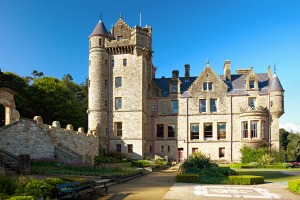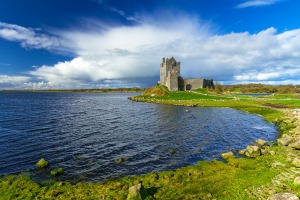March 17 -- St. Patrick's Day -- is when everyone becomes Irish for a day, marches in or watches parades, wears green, eats corned beef and cabbage, and, in some cases, drinks too much green beer. (At least, that's how it's celebrated in America -- the Irish themselves often tone it down a bit.)
But who was the real St. Patrick?
He's credited with bringing Christianity to Ireland in the 5th Century AD, and, among other heroic deeds, driving the snakes out of Ireland. The first is only partly true, and the second is almost certainly not true -- Ireland is too cold and damp for snakes to live there anyway.
But he was a larger-than-life figure.

Born in Britain
According to the folks who run the St. Patrick Centre in County Down, in what is now Northern Ireland, St. Patrick was born in Britain and was captured and brought to Ireland at age 16, when he was sold into slavery.
He spent six years working as a shepherd, praying for divine guidance. After escaping on a boat to France, he returned to Britain and trained to become a Catholic bishop. Then, following a prophetic dream, he returned to Ireland, where he converted the local chiefs, who in turn helped convert their subjects.
While there were some Christians in Ireland before St. Patrick's arrival, he had the charisma and therefore gets the lion's share of the credit for establishing what was known as the "Celtic Church."
Metaphorical Snakes
As for St. Patrick driving out the snakes who were never there, they were symbolic of the pagan idolatry and evil that was prevalent before the Irish converted to Christianity. Hence he drove out the "snakes."
(It's believed that 8th Century Irish monks engaged in a fair bit of fanciful hagiology -- embellishing St. Patrick's biography -- thus adding to his legend.)
Why March 17?
St. Patrick is said to be buried on the Hill of Down at Down Cathedral, which sits on the site of an old monastery (a number of churches have subsequently been destroyed there), but no one knows for certain.
In any event, it's become a place of pilgrimage for the devout, and on March 17 -- the day St. Patrick is said to have died -- an ecumenical service is held here, bringing Catholics and Protestants together.
The St. Patrick Centre is located two hours north of Dublin and about 40 minutes south of Belfast.
Four Ireland Trips to Consider for St. Patricks Day:
Northern & Southern Ireland with Intrepid
Magical Ireland with Smartours
A Week in Ireland with Go Ahead Tours
Discover Northern Ireland with G Adventures
Or see All Ireland Guided Tours





